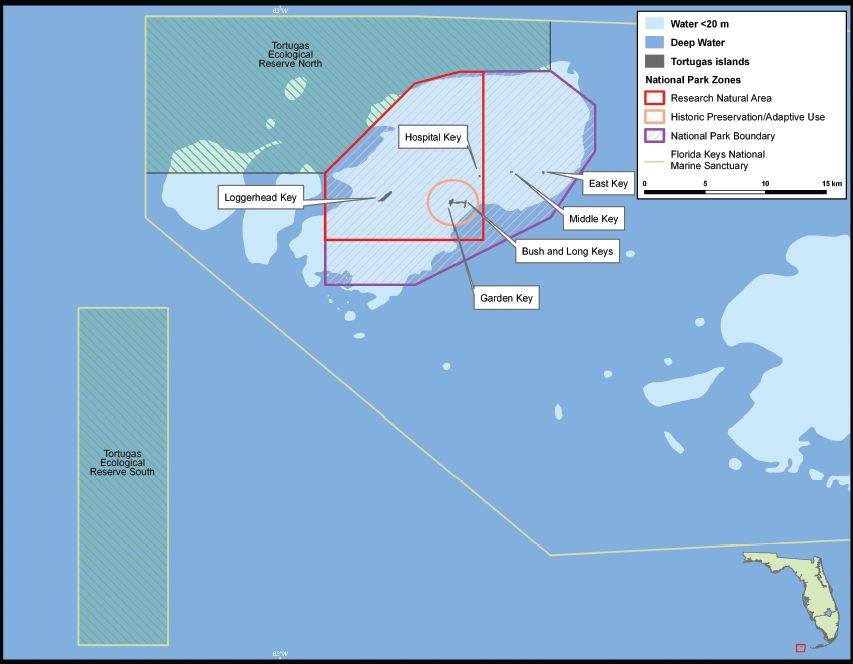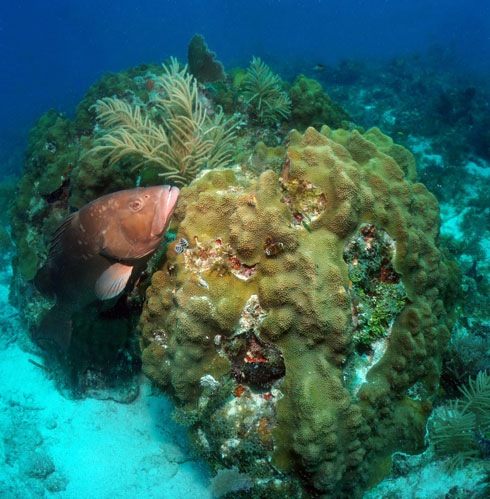A report from the National Oceanic and Atmospheric Administration (NOAA) released in February 2013 has found that “no-take” protections in the Tortugas marine reserve – located off the Florida Keys – are working as intended. Studies shows these methods are starting to benefit populations of overexploited reef fish, such as groupers and snappers. Since the reserve was established in 2001, scientists have observed that some reef fish are increasing in size and abundance within the protected area. The report did not find evidence that commercial or recreational fisheries have experienced any major economic losses due to the creation of the reserve.
The Tortugas Ecological Reserve was created in 2001 to protect an exceptional coral reef ecosystem that is located at the convergence of the Gulf of Mexico and the Atlantic Ocean. The reserve is composed of two “no-take” areas that cover 391 square kilometers (151 square nautical miles) of water. The reserve contains the highest coverage of coral reefs in the Florida Keys and serves as an important spawning ground for groupers, snappers and other types of reef fish.

In August 2012, NOAA completed an assessment of the Tortugas Ecological Reserve. The assessment was the first comprehensive attempt to evaluate the impact of the reserve on marine life and on the livelihoods of people who live in the region.
The findings of the assessment show that certain types of overfished species including black and red grouper, mutton snapper and yellowtail snapper are increasing in size and abundance within the marine reserve. Additionally, researchers observed that annual gatherings of spawning mutton snapper are beginning to reform inside the reserve. Mutton snappers were once thought to be almost completely wiped out from overfishing.

The assessment did not find evidence that commercial or recreational fisheries have experienced any major economic losses due to the creation of the reserve. The total catch of reef fish actually increased from 5.9 million pounds to 6.8 million pounds in the region after the creation of the marine reserve. Preliminary data suggest that fishermen have adapted to the creation of the reserve by shifting their fishing efforts to other productive nearby areas.
Sean Morton, Superintendent of the Florida Keys National Marine Sanctuary, commented on the findings in a February 4, 2013 news release. He said:
This research shows that marine reserves and economically viable fishing industries can coexist. The health of our economy is tied to the health of our oceans. They are not mutually exclusive.
Nearly two dozen researchers from NOAA, the University of Miami and the University of Massachusetts contributed to the report.
Bottom line: A new report from NOAA has found that “no-take” protections in the Tortugas marine reserve are starting to benefit populations of overexploited reef fish such as groupers and snappers. Since the reserve was established in the Florida Keys in 2001, scientists have observed that some reef fish are increasing in size and abundance within the marine protected area. The report did not find evidence that commercial or recreational fisheries have experienced any major economic losses due to the creation of the reserve.
Vibrant mix of marine life at extreme ocean depths
Salmon use Earth’s magnetic field to navigate ocean to river, says study











